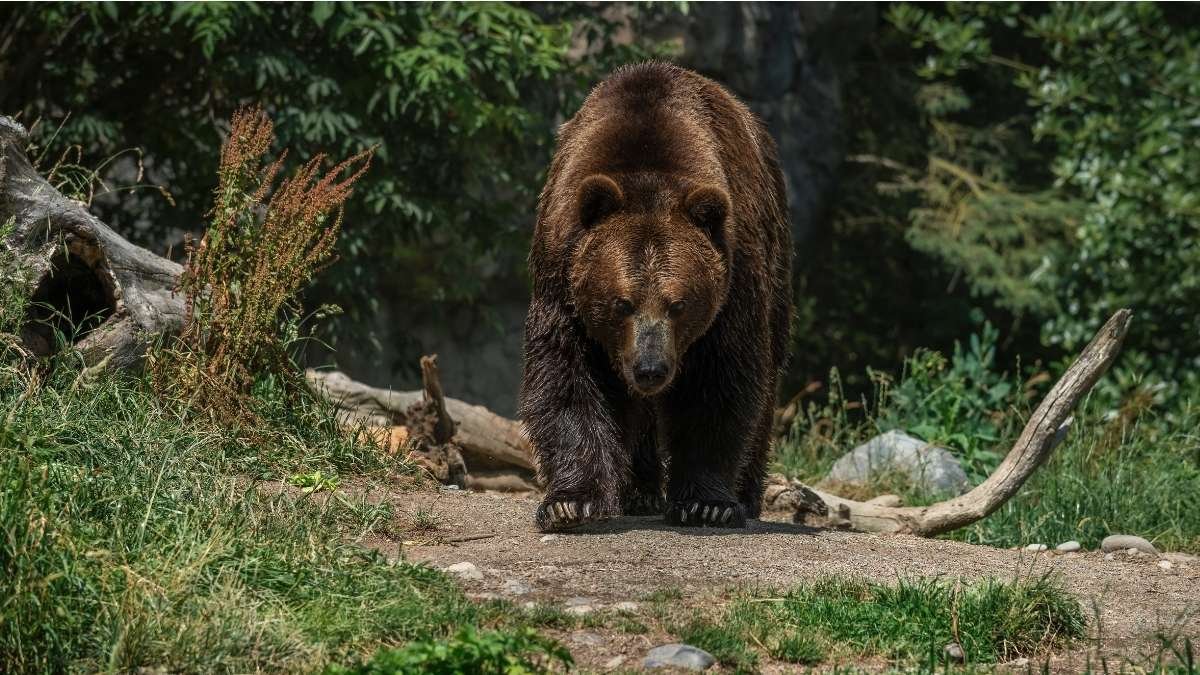The darkness of the wilderness carries a certain weight. On that first camping trip, every snap of a twig can send a jolt through your sleeping bag. You tell yourself it’s just a squirrel, but a deeper part of your brain whispers a different story.
The comfort you seek comes from small rituals—brushing your teeth, applying a bit of lip balm. You believe these harmless habits keep a piece of civilization with you in the wild. In reality, they are the very things that erase the line between your safe space and an uninvited visitor.
This guide pulls back the curtain on the most common and dangerous oversight new campers make. It is not about the food you packed; it is about the smells you forgot.
The Uninvited Guest: It’s Not What You Think
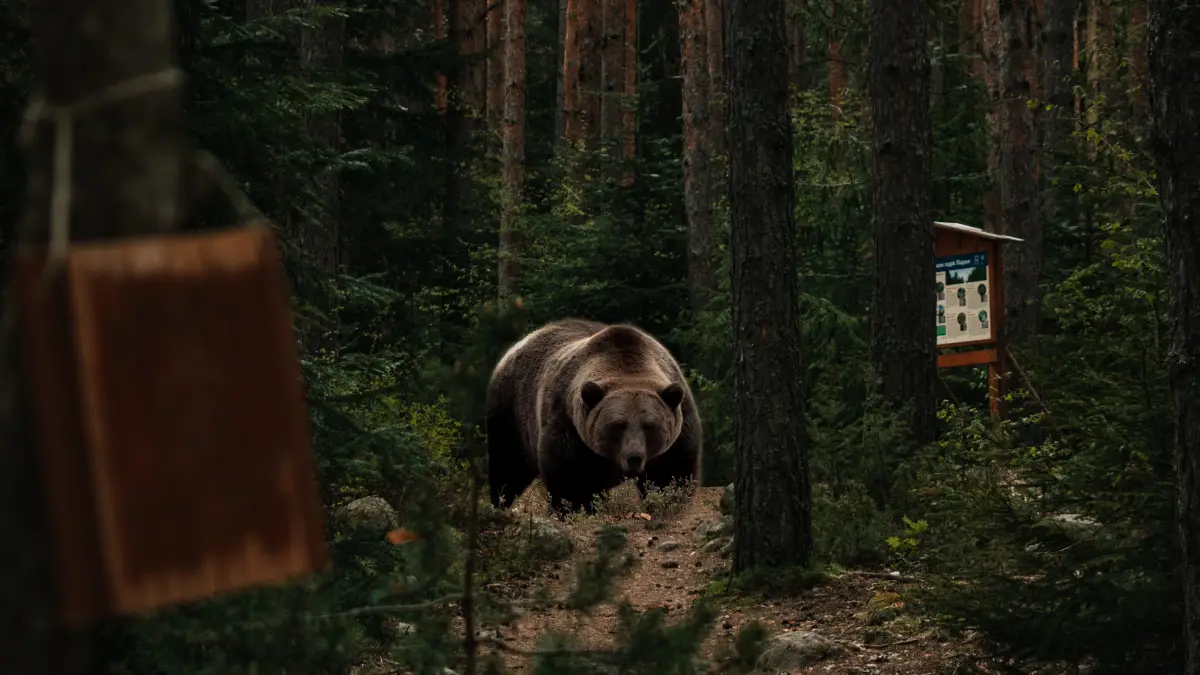
The Allure and Anxiety of the First Night Out
A first camping trip is a powerful thing. The sun goes down, the air gets cool, and the forest smells like pine and damp earth. Your new tent is a small, safe place in the big wilderness.
The crackle of your first campfire makes you feel secure. For a new camper, it’s a mix of feeling peaceful and a little bit anxious. Every time a twig snaps, you wonder, “What was that sound?”.
You get ready for bed, feeling extra alert. You do a few normal things without thinking. You brush your teeth. You put on scented lip balm.
Maybe you tuck a bag of trail mix in your backpack pocket for the morning. These are little comforts from home. But these “harmless” habits are where the biggest mistake in bear country is hiding.
The Real Problem: It’s All About Smell
The biggest mistake new campers make isn’t leaving a cooler of hot dogs out. That’s an obvious error. The most dangerous mistake is much smaller: keeping smelly non-food items in or near your tent.
This mistake happens because we don’t think about “food” the way a bear does.
To you, toothpaste is for cleaning your teeth and sunscreen is a lotion. An empty candy wrapper is just trash.
You wouldn’t eat any of them. But a bear experiences the world through its nose. Any new or interesting smell could mean food, so it has to check it out. A bear’s rule is simple: if it has a smell, it’s worth a look. This includes many things new campers forget about, like:
- Toiletries: Toothpaste, soap, deodorant, chapstick, and hand sanitizer.
- Cosmetics: Perfume, hair spray, and scented lotions.
- First-Aid: Scented creams or wipes.
- Trash: Even empty food wrappers and cans have strong smells that pull bears in.
- Gear: Dirty cooking pots and plastic containers that once held food can still smell.
Bringing any of these into your tent turns your safe sleeping spot into a beacon of smells, inviting a big, curious animal to come see what it is.
What Park Rangers Say: Smart Bears vs. Careless Campers
A famous park ranger saying sums up the problem: “There is considerable overlap between the intelligence of the smartest bears and the dumbest tourists”. This isn’t just a joke. It explains why keeping people and bears safe is so hard.
Bears are smart, curious, and they don’t give up easily. They will spend hours trying to open a cooler or a dumpster People, on the other hand, can be in a hurry, distracted, or just not know the rules. We often want the easiest solution.
So, any safety system has to be strong enough to stop a smart animal but simple enough for a tired person to use correctly every time. This puts all the responsibility on you, the camper. The bear is just being a bear. You are the one who has to think ahead and be disciplined.
A Bear’s World Is a World of Scent
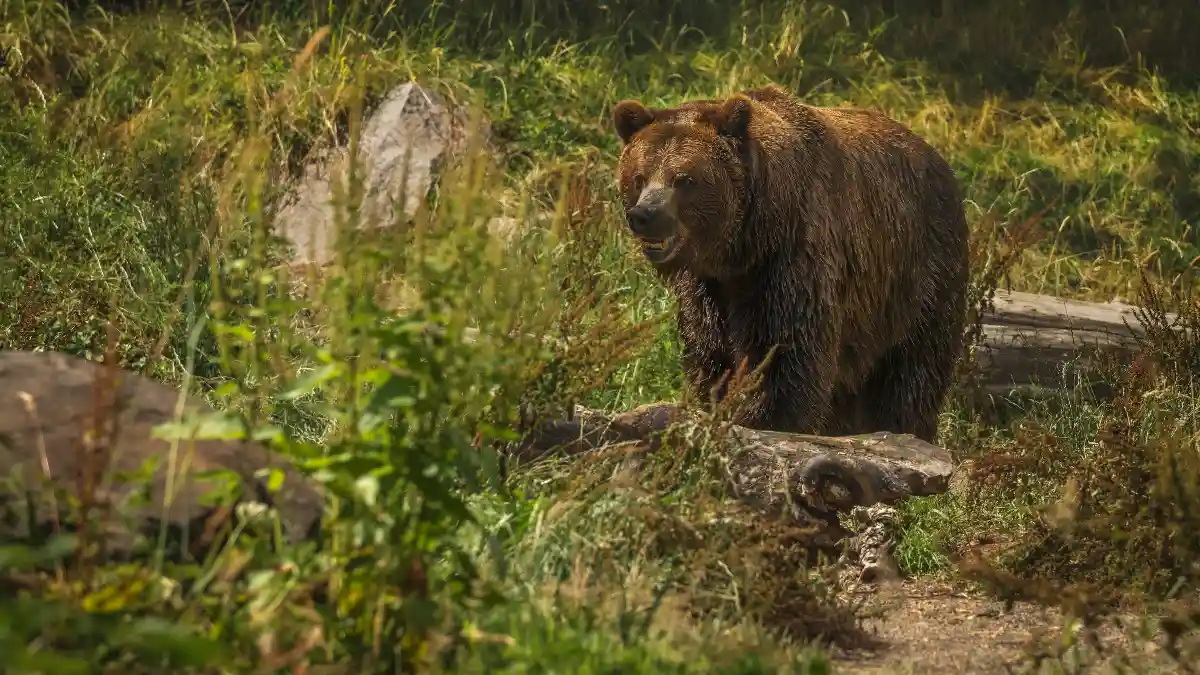
Why a Bear’s Nose is a Superpower
To get why toothpaste is as dangerous as a steak in your tent, you need to know how powerful a bear’s nose is. Smell is its main sense.
It’s how a bear finds its way, gets food, finds a mate, and senses danger. A bear’s sense of smell isn’t just a little better than ours; it’s on another level.
A bloodhound is famous for its tracking ability and has 230 million scent cells. A bear has up to seven times more. This makes its sense of smell about 2,100 times stronger than a human’s.
A bear can smell a dead animal or your dinner from miles away. It can pick one interesting smell out of all the other forest smells. This means you can’t hide a scent from a bear.
An item in a sealed bag, inside a backpack, inside a tent still sends out a signal. The only answer is to manage every smelly item perfectly.
The Full List of Smelly Items: If It Has a Scent, Lock It Up
The best way to get in the right mindset is to stop using the word “food.” Instead, use the word “attractant.” An attractant is anything with a smell, even if you can’t eat it. Groups like the U.S. National Park Service (NPS) have made long lists of these items based on years of bear encounters.
Everything on this list needs to be stored safely away from your tent, just like you would store fresh meat.
| Table 1: The Bear Attractant Checklist | |
| Category | Specific Items |
| Food & Drink | All food (fresh, packaged, canned), coolers (even when empty), beverage containers (cans, bottles), pet food and bowls, livestock feed, bird seed. |
| Toiletries & Cosmetics | Toothpaste, soap (bar and liquid), deodorant, sunscreen, insect repellent, hair spray, chapstick, lotions, all other perfumed items. |
| Cooking & Cleaning | Cooking oils and grease, unwashed pots, dishes, and utensils, camp stoves and BBQs, tablecloths, dish soap and towels, wastewater from cooking/dishes. |
| Garbage & Waste | All food wrappers, trash, recyclables, fish remains, leftover food scraps. |
| Other Items | Fuel (gasoline, propane), plastic containers (even if not used for food), baby wipes, crumbs in baby seats. |
Use this list when you pack and when you set up your camp. Before you leave, check the list to make sure you have a way to store everything safely.
When you get to your campsite, use the list to check all your gear and move every smelly item to a safe storage spot right away.
How One Mistake Can Kill a Bear
When you don’t secure a smelly item, it can cause more than just a ruined trip. It can start a chain of events that often ends with the bear being killed.
This happens because the bear’s behavior changes in two ways: it gets a taste for human food and it gets used to people.
The First Easy Meal:
A bear follows a smell to a campsite. It finds a cooler that wasn’t locked or a backpack with toothpaste inside.
It gets the item easily and gets a big reward of calories with little work. This one event teaches the bear a powerful lesson: campsites mean easy food. This is called food conditioning.
Losing Fear of People:
The bear will now look for more easy meals. It comes back to the same campground or starts checking out others.
Each time it gets food, its natural fear of people gets smaller. It learns that the loud creatures in its home are not a threat, but a source of food. This is called habituation.
Becoming a “Problem Bear”:
A bear that has lost its fear and gotten a taste for human food gets bolder. It might come into camps during the day, even when people are there.
It might start to damage things, like ripping tents or breaking into cars to find food. At this point, wildlife managers call it a “problem bear.”
The Final Result:
Once a bear is seen as a threat, there are not many options. Moving the bear usually doesn’t work, as it might travel hundreds of miles to come back or just cause problems somewhere else.
Trying to scare it away with things like rubber bullets can work sometimes, but not on a bear that is very used to getting food from people. Sadly, the most common result is that the bear has to be put down.
This is why you hear rangers say, “A fed bear is a dead bear”. The responsibility is on us. Storing your smelly items correctly isn’t just about protecting your gear.
It’s about protecting the bear’s life. You should do it not because you’re afraid of the bear, but because you respect its right to stay wild.
How to Set Up a Bear-Safe Campsite
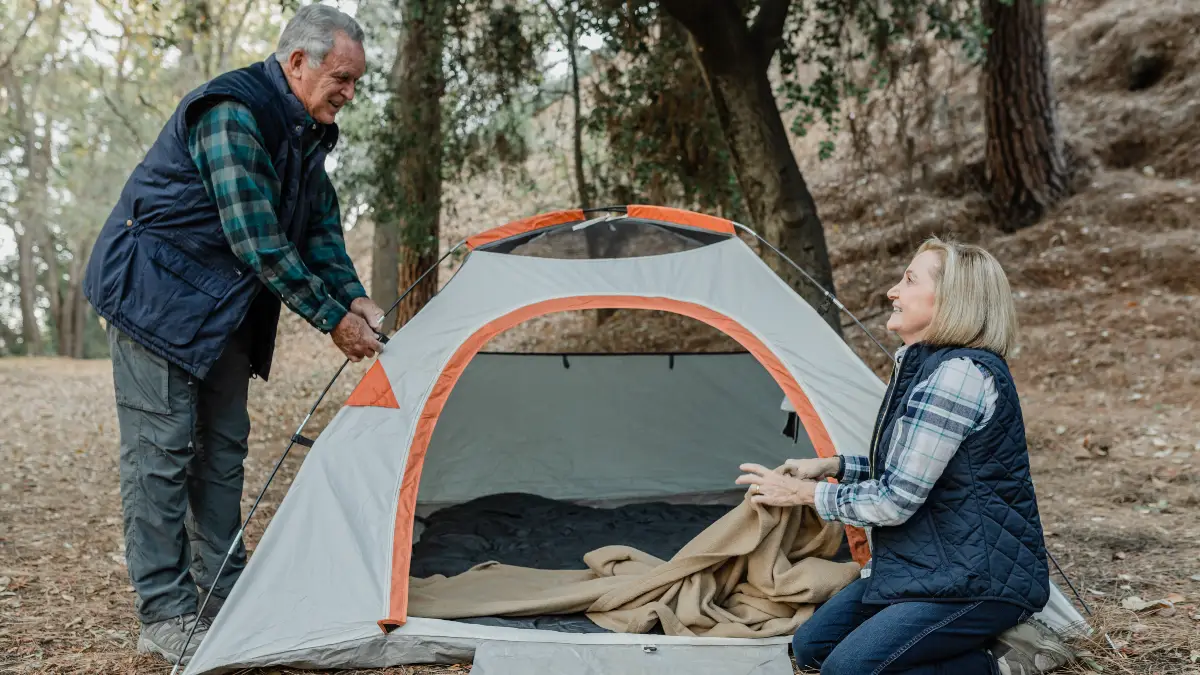
A smart campsite layout is your best defense against bears. The goal is to make your campsite smell as little as possible, so a bear isn’t interested in the first place. The best way to do this is with the “Bearmuda Triangle.”
The Safe Camping Triangle: A Plan for Safety
The “Bearmuda Triangle” is a system for setting up your camp and managing your stuff in bear country. It works by keeping three key areas far apart from each other:
- Your Sleeping Area: This is your tent. This area must be kept completely free of all smelly items.
- Your Cooking Area: This is your “kitchen,” where you make and eat all your food.
- Your Storage Area: This is where you keep your food locked up, either in a bear canister, a proper bear hang, or a food locker.
These three spots should make a triangle. Each spot should be at least 100 yards (or about 100 big steps) away from the other two. Some say 200 feet is enough, but 100 yards is safer.
It’s very important to put your tent upwind from your cooking and storage areas. This way, the wind blows the smells from your food away from your tent, not towards it. This setup also helps you be more disciplined.
If you have to walk 100 yards to get a snack, you’ll be less likely to bring it back to your tent.
How to Cook and Clean Safely
Your cooking area is the smelliest part of your camp. You have to keep it very clean.
Choose Low-Scent Foods:
When you can, pick foods that don’t have strong smells. Things like pasta, rice, and jerky are better than greasy foods like bacon or fish, which can attract bears from far away.6
Clean Up Right Away:
Wash all your dishes and pots right after you eat. Dirty dishes left out will release food smells into the air.10
Deal with Dishwater:
Your dishwater has tiny bits of food and smells in it. Never dump it on the ground near your camp. First, pour the water through a screen or a cloth to catch all the food bits. Pack these food bits out with your trash.
Then, carry the strained water at least 100 yards away from your camp and any river or lake before you pour it out.
Clean Spills:
If you spill any food or drink, clean it up completely right away. A small spill can leave a strong smell for hours.
Keeping Yourself and Your Clothes Scent-Free
This last part connects back to the main mistake: bringing smelly things into your tent. You need to treat your own body and clothes as possible attractants.
- Have Special Sleep Clothes: Never sleep in the clothes you wore while cooking.3Food smells stick to clothes and a bear can easily smell them. Before bed, change into a clean set of clothes that you only use for sleeping.
- Store Your “Cook Clothes”: The clothes you wore while cooking are smelly. They must be stored overnight with your food in your bear canister or bear hang, not in your tent.
- Brush Your Teeth in the Right Place: Do all your hygiene, like brushing your teeth, in your cooking area, far from your tent. Spit your toothpaste 100 yards away from your tent, just like you do with dishwater.
When you follow this whole system, you make your campsite as boring as possible to a bear. It reduces the chance of a close encounter.
3 Ways to Store Your Food Safely
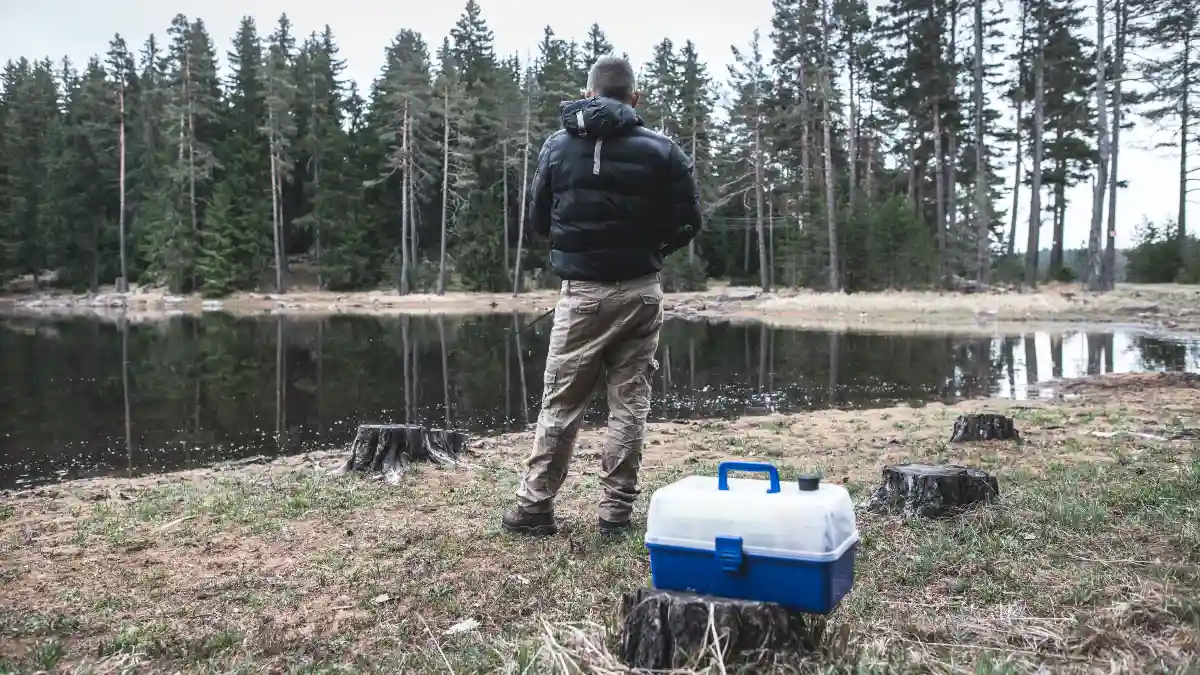
Once you know what items are smelly and you’ve set up your camp the right way, the last step is to lock them up. You can’t just choose any method you like. You have to follow the local rules, which are based on how many bears are in the area and how they act.
Option 1: Use a Hard-Sided Bear Canister
In many popular parks with lots of bears, like Yosemite and Grand Teton, hard-sided bear canisters are the only legal way to store your food in the backcountry.18
- How It Works: A bear canister is a strong plastic or carbon fiber container with a special lid. A bear can’t open it or chew through it. To be approved for parks, they have to pass a test with real grizzly bears.
- How to Use It:
- Pack Smart: To save space, take food out of its bulky boxes and put it in plastic bags. Squeeze all the air out.7
- Keep It Locked: A canister only works if it’s locked. Lock it right after you use it, every time.7
- Store It Right: At night, put the canister on flat ground at least 100 feet (and even better, 100 yards) from your tent. Don’t put it near a cliff or a river, because a bear might knock it into a place you can’t get it back. Don’t tie ropes to it, because a bear could carry it away. You can put pots on top of it to make a loud alarm if a bear touches it at night.
Option 2: Hang a Bear Bag
Hanging your food in a bag from a tree is the old-school method. But it’s hard to do right, and in many places, bears have learned how to get them down.
Some parks, like Yosemite, don’t allow it anymore. If you are in a place where it’s allowed, you have to do it perfectly.
- Find the Right Tree: This is the most important part. The branch must be:
- Alive and strong.
- At least 15 to 20 feet off the ground.
- The spot where you hang the bag must be at least 10 feet from the tree trunk.
- The branch can’t be so thick that a bear could walk on it.
- The Goal: Your food bag should hang at least 12 feet high, 10 feet from the trunk, and 4-5 feet below the branch. This puts it in the middle of the air where a bear can’t reach it from the ground, the trunk, or the branch.
- How to Hang It:
- The PCT Method: This is a good technique that uses one rope and a small clip. You pull the bag all the way up to the branch, then use a small stick to lock the rope so the bag hangs down. It’s safer because there is no rope tied to the tree trunk for a bear to cut.
- The Counterbalance Method: This uses two bags of about the same weight. You throw a rope over the branch, pull one bag up, then clip the second bag on and push it up to the same height with a stick.
People often fail by picking a dead branch, hanging the bag too low, or hanging it too close to the trunk.
Option 3: Using Your Car or a Food Locker
If you are at a campground you can drive to, storing your food is easier, but you still have to follow the rules.
Metal Food Lockers:
Most campgrounds in bear country have metal food lockers at each site. You must use them. Put all your smelly items in the locker as soon as you arrive.
Keep the locker closed and latched at all times, even if it’s empty. Bears in campgrounds often check every locker to see if someone forgot to latch it.
Storing in a Car:
Sometimes you can store items in your car, but there are strict rules.
- What Kind of Car: Only hard-sided cars with the windows rolled all the way up. A pop-up camper or a car with a soft top is not bear-proof.
- Hide Everything: Put all items out of sight, like in the trunk or under a blanket. If a bear sees a cooler on your car seat, it might break a window to get it.
- Time Limits: In some places like Yosemite Valley, you can only store food in your car during the day. At night, you have to move everything to a food locker. This is because bears are very good at breaking into cars, and they are most active at night.
| Table 2: Bear-Proofing Methods: A Comparative Guide | ||||
| Method | Effectiveness | Where to Use It | Pros | Cons |
| Hard-Sided Bear Canister | Very High | Backcountry (often required) | Easy to use; works anywhere; can be used as a stool. | Heavy and bulky; doesn’t hold a lot. |
| Bear Hang (PCT Method) | Medium to High (if perfect) | Backcountry (where allowed) | Lightweight; holds a lot of food. | Hard to do right; need the perfect tree; bears can still get it. |
| Campground Food Locker | Very High | Drive-in Campgrounds | Provided for you; big and very safe. | Only at certain campgrounds. |
| Vehicle Storage | Medium (with rules) | Drive-in Campgrounds (where allowed) | Easy for car campers. | Not totally bear-proof; often only for daytime; risk of car damage. |
Good Habits for Staying Safe: The Leave No Trace Way
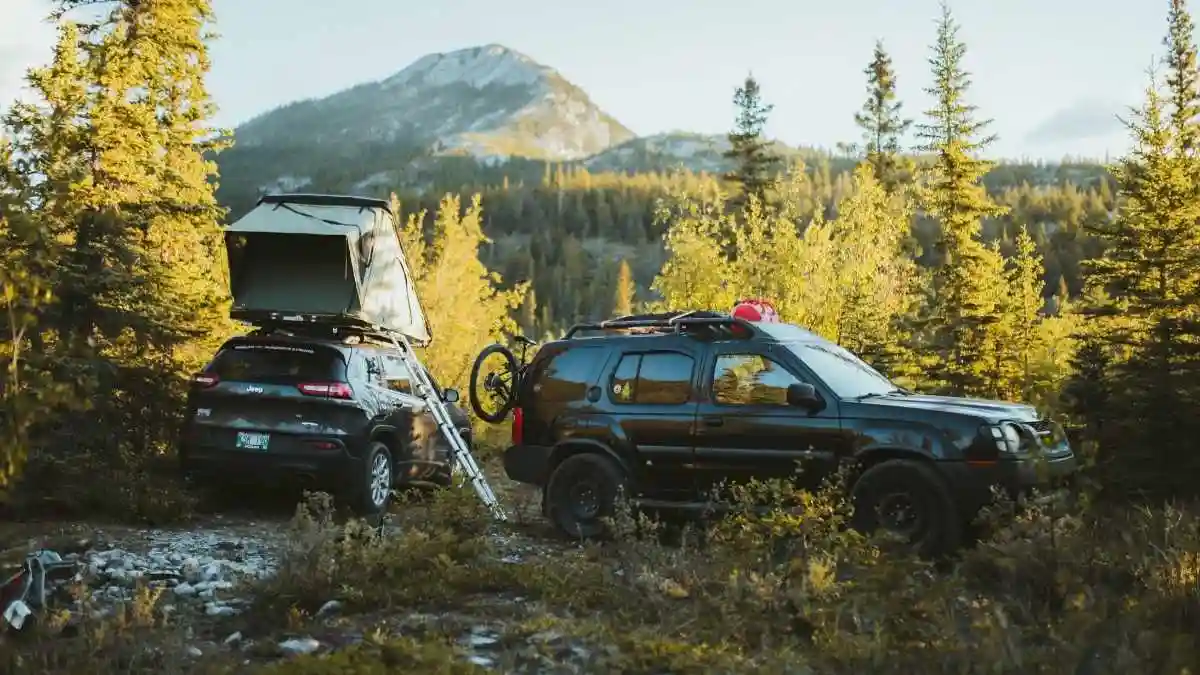
While knowing the rules is important, the best way to avoid bear problems is to adopt a good mindset. The Leave No Trace (LNT) Seven Principles give you this mindset. They change bear safety from a list of things to do into a way of thinking about protecting the outdoors.
More Than Just Rules
The LNT principles are not just about being “green.” They are a system for reducing your impact on the land, the animals, and other people.
In bear country, this is also a safety system. When you follow the LNT way of thinking, you start to plan ahead and make choices that lower the chance of a problem. This is better than just memorizing rules because it helps you handle new situations.
LNT Principles in Bear Country
Several of the seven principles directly help you stay safe around bears.
Principle 1: Plan Ahead and Prepare:
This is the most important part of bear safety. Before you go, research the area you’re visiting.
Check the park’s website or call a ranger to ask about recent bear activity and the food storage rules.
Do you need a bear canister? Can you hang your food? Knowing this helps you pack the right gear. This also means repackaging your food to make it smaller and create less trash.
Principle 2: Travel and Camp on Durable Surfaces:
This helps you pick a good campsite. To respect animals, camp at least 200 feet from lakes and streams, which are like highways for wildlife.
Also, don’t set up your tent near signs of bears, like fresh tracks, torn-up logs, or a lot of berry bushes.
Principle 3: Dispose of Waste Properly.
This means “Pack It In, Pack It Out.” In bear country, you must pack out all your trash and food waste in a sealed bag and store it with your other smelly items.
This includes things like apple cores and banana peels. Leaving them behind teaches bears that trails and camps are places to find food.
Never bury or burn your trash. Bears can easily smell and dig up buried trash, and campfires don’t get hot enough to burn food completely, leaving smells behind.
Principle 6: Respect Wildlife:
This is the heart of bear safety. The best way to show respect is to never let a bear get your food, which stops it from becoming a “problem bear”.
Respect also means watching animals from far away—at least 100 yards for bears—and never getting closer. If an animal changes what it’s doing because of you, you are too close.
Keeping your dog on a leash also shows respect, because a loose dog can bother a bear and cause an attack.
Following these principles helps everyone. If one camper makes a mistake, it can create a problem bear that becomes a danger to the next person, even if that person does everything right. By following LNT, we all help keep bears wild and keep the wilderness safe for everyone.
The Human Factor: How to Camp with Confidence
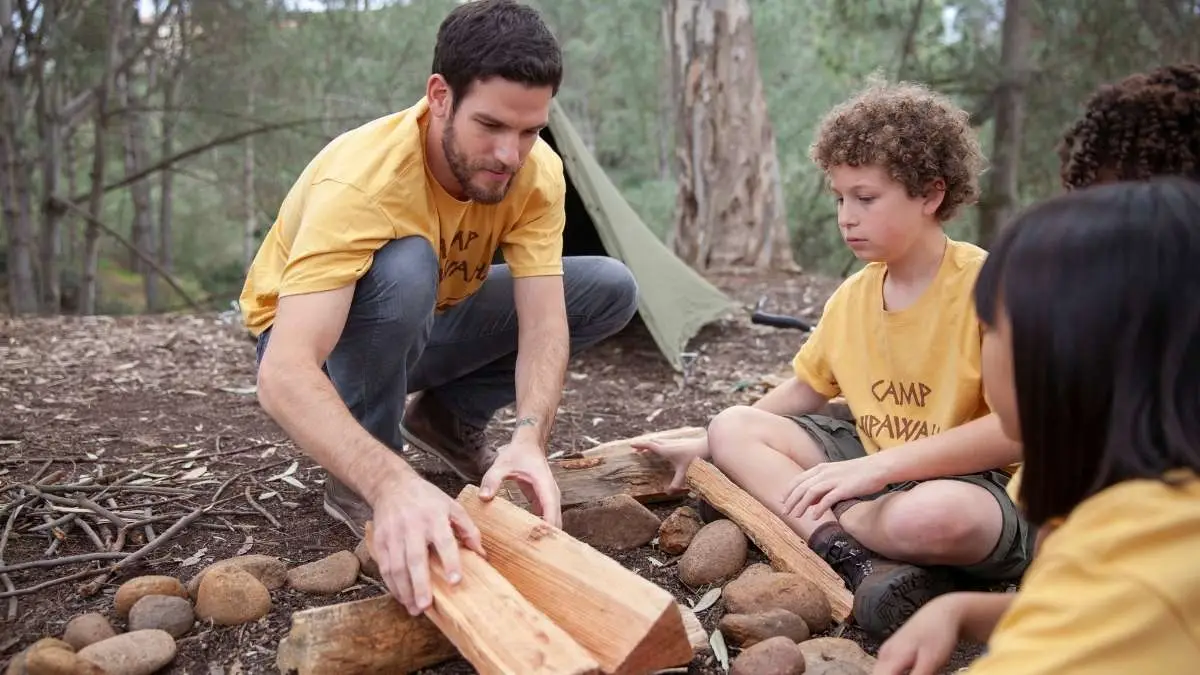
The last piece of the puzzle is your own mind. Fear, being too confident, and other mental traps can lead to bad choices. If you know about these, you can move from feeling anxious to feeling confident.
Risk vs. Reality: How Common Are Bear Attacks?
For many new campers, the fear of bears is a big deal, often made worse by movies and stories. It’s important to look at the facts.
Bear attacks are very, very rare. A 45-year study in Yellowstone, a place with a lot of bears, found that the chance of being hurt by a grizzly bear was about 1 in 3.6 million visits. For black bears, it was even lower, at 1 in 23.2 million visits.
Across all of North America, very few people are killed by bears, less than three per year on average from 2000 to 2017. You are much more likely to get in a car crash on the way to the park or get hit by lightning than be killed by a bear.
These numbers aren’t meant to make you careless. They are meant to help you see the risk clearly. The risk is not zero, but it is very small, and you have a lot of control over it. A bad encounter is usually not random.
It’s often caused by a human mistake, like surprising a bear or not storing food right. This is good news: by following the rules for managing smells and setting up your camp, you can make a tiny risk even tinier.
Why We Get Careless: Mental Traps to Avoid
Getting too comfortable is the biggest threat to safety, and it can happen to anyone. We often fall into mental traps that lead to bad decisions. If you know what these traps are, you can avoid them.
- “It’s Never Happened Here Before.” When you go to the same place many times and never see a bear, you might start to think there’s no real danger. This can make you lazy about storing your food.
- “It Won’t Happen to Me.” We all tend to think bad things are less likely to happen to us. This makes us underestimate risks and ignore safety rules.
- “Everyone Else is Doing It.” In a group, you might do something risky to fit in or not look too careful. A new camper might not speak up about hanging a bear bag if no one else seems to care.
- “The Expert Knows Best.” Sometimes a group will just listen to the person who seems like an expert. This can be dangerous because other people might not say anything even if they see a problem.
Bear experts see these things happen all the time. They know that even people who try to be careful can make simple mistakes, like not latching a bear box all the way. The way to avoid these traps is to be disciplined and humble. The rules are for everyone, on every trip, every single night.

